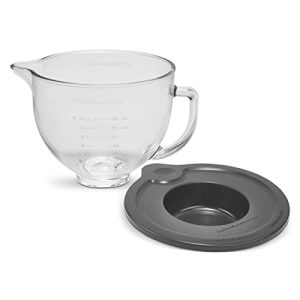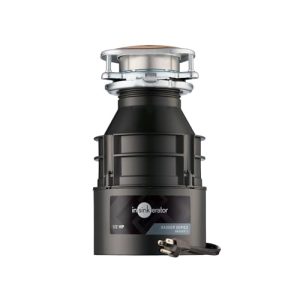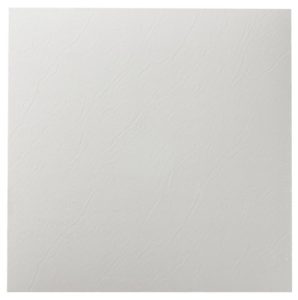Are you tired of washing dishes by hand but don’t have a built-in dishwasher? A portable dishwasher could be your perfect solution.
But how do you connect it to your kitchen sink quickly and without any hassle? You’re about to discover simple, step-by-step instructions that anyone can follow. By the end of this guide, you’ll have your portable dishwasher hooked up and ready to use, saving you time and effort every day.
Keep reading to learn exactly how to make this easy connection and enjoy spotless dishes without the stress.
Prepare Your Kitchen Sink
Preparing your kitchen sink is a key step before connecting a portable dishwasher. This ensures a smooth setup and avoids damage or leaks. A clean and suitable area helps the installation process go faster. Also, having the right tools ready saves time and effort. Follow these simple steps to get your kitchen sink ready.
Clear The Area
Remove all items around and under the sink. Clear space allows easy access to plumbing and faucet. Wipe down the sink and counters to remove dirt and grime. A clean work area reduces the chance of accidents. Make room for the dishwasher hose and other parts.
Check Sink Compatibility
Look at your faucet to see if it fits the dishwasher adapter. Most portable dishwashers need a faucet with removable aerator. Check if the sink has a sprayer or filter that might block the connection. Measure the sink area to ensure the dishwasher fits nearby. Confirm the sink drain can handle extra water flow.
Gather Necessary Tools
Collect tools before starting the installation. These often include:
- Adjustable wrench
- Screwdriver
- Plumber’s tape
- Bucket or towel for water spills
- Dishwasher adapter kit
Having tools ready keeps the process efficient and stress-free. Check your dishwasher manual for any special tools needed.
Turn Off Water Supply
Before you connect your portable dishwasher to the kitchen sink, turning off the water supply is crucial. This simple step prevents leaks and water damage while you work. Taking a moment to ensure no water flows will save you from unexpected messes and interruptions.
Locate The Shutoff Valve
Start by finding the shutoff valve that controls water to your kitchen sink. It is usually found under the sink, near the pipes. Sometimes it’s a small knob or lever attached to the pipe leading to the faucet.
If you can’t find it under the sink, check near the main water supply line or consult your home’s plumbing map. Knowing exactly where this valve is will make the process much smoother.
Ensure Water Is Fully Off
After turning the valve, test if the water is completely off. Open the kitchen faucet and watch closely. If water still flows, the valve might not be fully closed or there could be a problem with the plumbing.
Don’t rush this step. Water pressure can cause leaks or damage if not fully shut off. If you face difficulty, consider using a wrench gently to close the valve or call a professional for help.
Attach Adapter To Faucet
Attach the adapter securely to your faucet by removing the aerator first. Ensure a tight fit to prevent leaks before connecting the dishwasher hose. This simple step allows water to flow easily into your portable dishwasher.
Attaching the adapter to your kitchen faucet is a crucial step in connecting your portable dishwasher. This step ensures that water flows seamlessly from your tap into the dishwasher. Doing it right can save you from leaks and inefficiencies.Select The Right Adapter
Choosing the right adapter is essential. Faucets come in various designs, and not all adapters fit every tap. Check the thread size of your faucet before purchasing an adapter. Adapters typically come in two standard sizes. Ensure you match this with your faucet’s specifications. If unsure, take a picture or bring a measurement to the hardware store for assistance.Secure The Adapter Properly
Properly securing the adapter is a must to prevent leaks. Start by removing the aerator from your faucet. Once you’ve done that, attach the adapter tightly. Hand-tighten the adapter to avoid damage. Use a wrench for a snug fit if necessary, but be cautious not to over-tighten. A well-secured adapter ensures a reliable connection. Have you ever struggled with leaks because of a loose adapter? Don’t let a simple oversight cause frustration. Paying attention to these details can make your portable dishwasher experience smooth and hassle-free.Connect Dishwasher Hose
Connecting the dishwasher hose is a key step to ensure your portable dishwasher works smoothly with your kitchen sink. A secure hose connection prevents leaks and guarantees proper drainage during the wash cycle. Let’s break down how to attach the hose to the adapter and secure every connection tightly.
Attach Hose To Adapter
Start by sliding the dishwasher hose over the sink adapter’s outlet. The hose should fit snugly without forcing it, but not so loose that it easily slips off. If the hose feels stiff, try warming it slightly with warm water to make it more flexible.
Make sure the hose is pushed all the way onto the adapter until it stops. You might notice a rubber gasket inside the adapter—this creates a watertight seal, so don’t forget to check it’s in place. Have you ever had water dripping under your sink? Often it’s because the hose wasn’t seated properly at this step.
Tighten Connections
Once the hose is attached, secure the connection using the hose clamp that came with your dishwasher or adapter kit. Use a screwdriver to tighten the clamp evenly, but be careful not to overtighten—it can damage the hose or adapter.
Check all connections visually and by gently tugging on the hose to confirm it won’t come loose. If you notice any wiggle or movement, tightening the clamp a little more usually solves it. A firm, leak-free connection keeps your kitchen dry and your dishwasher running efficiently.
Set Up Drain Hose
Setting up the drain hose correctly is essential for your portable dishwasher to work smoothly without leaks or drainage problems. A poorly positioned hose can cause water to back up or spill, turning your kitchen cleanup into a hassle. Let’s focus on how to position and secure the drain hose to keep your dishwasher running efficiently.
Position Drain Hose Correctly
The drain hose should be placed so water flows naturally out of the dishwasher without any kinks or sharp bends. Avoid looping the hose downward or allowing it to dip below the sink drain level, as this can cause water to collect and create blockages.
Try to keep the hose elevated slightly above the drain connection point. This helps prevent dirty water from siphoning back into your dishwasher. Have you noticed how a simple bend in a hose can stop water flow entirely? That’s why smooth, gentle curves matter here.
Secure Hose To Sink Or Drain
After positioning the hose, it’s crucial to secure it firmly to the sink or drain to avoid it slipping out during operation. Use hose clamps or zip ties to fasten the hose tightly to the drain pipe or faucet adapter.
Make sure the connection is snug but not so tight that it damages the hose. A loose hose can cause leaks, while an overtightened one might crack or weaken over time. You want a balance that keeps the hose stable during every wash cycle.
Test The Connection
Testing the connection is a crucial step after hooking up your portable dishwasher to the kitchen sink. This process ensures everything works properly and prevents water damage. Carefully checking the setup helps catch leaks early and confirms the dishwasher runs smoothly. Follow these steps to confirm your connection is secure and ready for daily use.
Turn On Water And Dishwasher
Start by turning on the water supply to the kitchen sink. Next, power on the portable dishwasher. Listen for normal water flow sounds inside the dishwasher. Watch the dishwasher as it begins to fill with water. This step confirms water reaches the appliance without interruption.
Check For Leaks
Look closely around all connection points, including hoses and fittings. Use a dry cloth to spot any moisture or drips. Pay special attention to the sink adapter and hose clamps. Even small leaks can cause damage over time. Detecting leaks early saves effort and repair costs later.
Adjust Connections If Needed
If you notice leaks or loose fittings, turn off the water immediately. Tighten hose clamps and fittings by hand or with a wrench. Avoid over-tightening to prevent damage. After adjustments, turn water and dishwasher back on. Repeat the leak check to confirm all connections are secure and dry.
Tips For Maintenance
Keeping your portable dishwasher in top shape doesn’t have to be a chore. With a few simple maintenance habits, you can avoid unexpected leaks, clogs, or poor washing results. Regular attention to key parts will extend the life of your appliance and save you time and money.
Regularly Inspect Hoses
Check the hoses connecting your dishwasher to the kitchen sink every few weeks. Look for cracks, bulges, or signs of wear that could lead to leaks. If you spot any damage, replace the hose immediately to prevent water damage in your kitchen.
Also, make sure the connections are tight but not overly forced. Loose fittings can cause water to drip, while overtightening might crack the hose ends. Have you noticed any water puddles under your sink? That’s a clear sign to inspect your hoses now.
Clean Filters And Drains
Clogged filters and drains reduce your dishwasher’s performance and can cause odors. Remove the filter regularly and rinse it under running water to clear out food particles and debris. This simple step ensures your dishwasher cleans dishes effectively every time.
Don’t forget to check the drain area as well. Food bits and soap scum can build up, causing slow drainage or backups. Cleaning these parts not only improves efficiency but also prevents potential plumbing issues.
Frequently Asked Questions
How Do I Connect A Portable Dishwasher To A Kitchen Sink?
To connect a portable dishwasher, attach its water inlet hose to the kitchen faucet. Use a faucet adapter if needed. Secure connections to avoid leaks. Connect the drain hose to the sink drain or garbage disposal. Ensure all fittings are tight before use.
What Tools Are Needed To Connect A Portable Dishwasher?
You typically need a faucet adapter, adjustable wrench, and pliers. Some models may require a screwdriver. These tools help secure water and drain connections. Always check your dishwasher’s manual for specific tool recommendations and installation instructions.
Can I Use Any Kitchen Faucet For A Portable Dishwasher?
Most portable dishwashers work with standard kitchen faucets. However, some faucets with built-in sprayers or irregular shapes may need special adapters. Verify compatibility before purchasing an adapter. This ensures a secure and leak-free connection.
How Do I Prevent Leaks When Connecting The Dishwasher?
Ensure all hose connections are tight and secure. Use plumber’s tape on threaded fittings to improve sealing. Check for cracks or damages on hoses before installation. Run a test cycle to confirm there are no leaks after connecting.
Conclusion
Connecting a portable dishwasher to your kitchen sink is simple and quick. Follow the steps carefully for a secure fit. Check all connections to avoid leaks. Use the right tools and parts for safety. Enjoy clean dishes without hassle or stress.
This setup saves space and adds convenience. Keep your kitchen tidy and efficient every day. Try it yourself and see the difference.

Sophie Hartwell is the founder of KitchenQuik.com, where she shares kitchen tips, smart cooking hacks, and the best product picks to make everyday cooking easier and more enjoyable.




